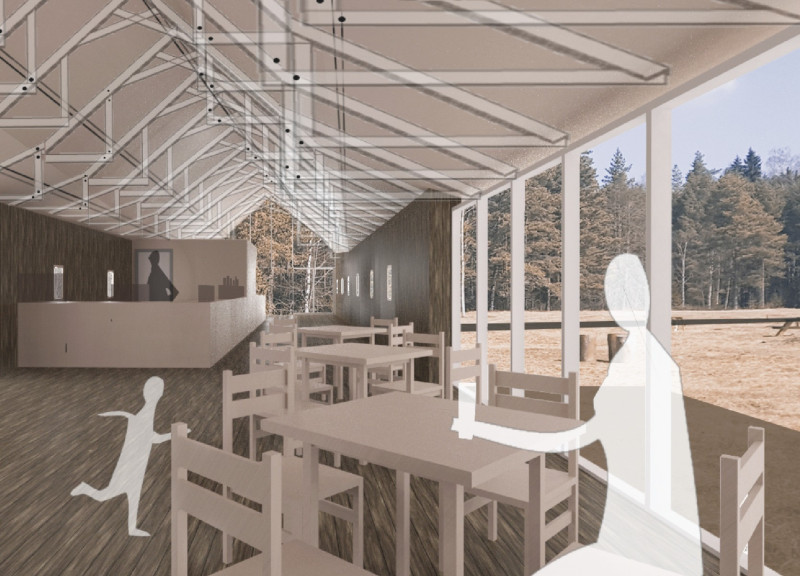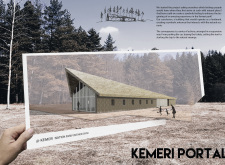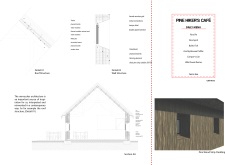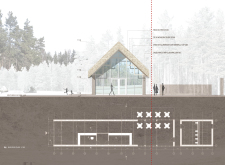5 key facts about this project
The Kemeri Nation Park Visitor Center is located in a natural landscape, designed to welcome visitors exploring the park's environment. The center emphasizes an approach that enhances emotional connections to nature. It aims to provide a meaningful experience, guiding users through various activities while fostering interaction with the surroundings.
Architectural Concept
At the heart of the design is the idea of creating a smooth transition from the outside world to the natural beauty of Kemeri Park. The layout connects essential spaces effectively, allowing for easy navigation. Elements such as parking, ticketing counters, and information areas are organized in a way that makes sense for visitors, encouraging them to engage with the facility and the park.
Functional Spaces
The visitor center includes a variety of functional spaces to meet different needs. There are camping sites, playgrounds, exhibition rooms, and a café, supporting a range of activities for different groups. Each area is purposely placed to enhance visitor experience while promoting exploration of the park. Visitors can easily enjoy both facilities and nature.
Materiality and Aesthetic
The design draws inspiration from local architecture, taking traditional building forms and giving them a modern twist. The roof uses thatch, plywood boards, and thermal insulation for practicality and comfort. The walls employ a wooden grid with metal connections, which supports the structure while connecting to local building customs. These material choices work together to support the center’s role in the environment.
Site Integration
The relationship between the visitor center and its environment is carefully considered. Large windows allow plenty of natural light to enter while providing views of the landscape outside. The design emphasizes outdoor interaction, ensuring that users can fully appreciate the beauty of Kemeri Park as they move through the building.
The Pine Hiker's Café is a notable feature, offering dishes that reflect regional flavors, such as pine pie and Baltic fish. This attention to local ingredients enriches the experience, inviting visitors to connect with the area through food as well.
The visitor center serves as a thoughtful example of how functional design can exist alongside nature. Textured walls and expansive glass surfaces create a relationship between the built environment and the scenery, encouraging visitors to enjoy the surrounding beauty from within.





















































